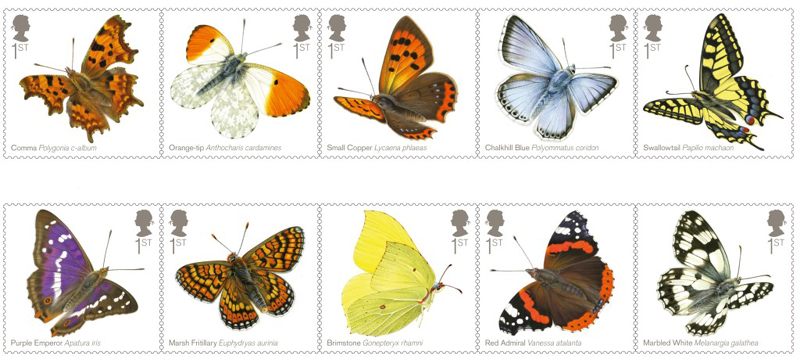You do not need to be a naturalist to love butterflies. Dolly Parton sings about them. So does Miley Cyrus. Tracy Morgan says he used to be an angry young man in a cocoon, but “now I’m a beautiful black butterfly.” And the poet Robert Frost once celebrated the “blue-butterfly” days of spring. But hold the lyrics. The butterflies are vanishing, according to an article in this week’s edition of the journal Science, and it’s happening even in protected areas. In a reserve in Germany’s Bavaria region, for instance, a study early this year found that just 71 butterfly species survive where there were 117 in the 19th century. That’s a 40 percent decline. In the Netherlands and England’s Suffolk County, researchers have found that 25 to 42 percent of resident breeding species are extinct. “There is evidence for similar declines,” writes Oxford University lepidopterist Jeremy A. Thomas, “in North America, Japan, and hotspots of butterfly endemism such as Brazil, South Africa, and Australia.” Charismatic species such as the Indo-Pacific birdwings, with their six-inch wingspan, are among the victims.
Thomas acknowledges that the decline in butterflies is not exceptional. Bumblebees, dragonflies, moths, and ladybirds (or ladybugs, in this country) may be even worse off because of environmental damage inflicted by humans. Those insect groups really matter in the sense that they have ecological value for pollination and predator control. Butterflies, on the other hand, are mostly just pretty to look at.
But their very uselessness, their pointless beauty, is the one thing that has made butterflies seem so important. I’ve always figured William Blake had butterflies in mind when he wrote that beautiful little poem: “He who binds to himself a joy / Does the winged life destroy / But he who kisses the joy as it flies / Lives in eternity’s sun rise.”
And the idea that we are destroying butterflies—not just individual butterflies but vast swaths of species—resonates ominously.
The main thing killing the butterflies, according to Thomas, is our continually intensifying use of the land, especially for agriculture. Adult butterflies are often generalists flitting from plant to plant, but their young typically depend on just one or two plant species for food and habitat. These native plant species are being shoved aside to make room for crops, plantations of exotic trees, suburban lawns, and urban development. The decline of milkweed in North America is the most notorious example. For monarch butterflies, the herbicide-induced loss of the plant that harbors their eggs and feeds their young has been a major factor in the population crash from a billion in 1990 to just 33 million today.
Unlike monarchs, about 80 percent of butterfly species are confined to narrow home ranges that can be as little as an acre, and they’re unlikely to migrate across even a half-mile of inhospitable ground to find another suitable habitat. So a neighborhood of meticulously maintained lawns, or a single highway, can be fatal for a species. Some butterfly species also have complex relationships with local ant species. The alcon blue butterfly is a classic example. Its caterpillar emits a chemical signal that tricks local ants into carrying it back to their nest, where it is safe from being jabbed by parasitic wasps. Inside the nest, it refines its signal to induce the ants to feed and tend it.
These kind of complicated relationships are easily jeopardized by change. For instance, when farmers in Europe abandon the marginal hillside fields where they used to intermittently graze livestock, that land becomes scrubbier and less grassy. That’s good news for many large mammals and a factor in Europe’s current rewilding. But it’s bad news for the butterflies that depended on those grasslands. Thomas lists pollution, drainage schemes, and climate change among the other landscape-scale factors threatening butterflies.
It is, however, possible to restore butterfly populations, with a little effort. By paying closer attention to the nuances of species ecology, protected areas in the United Kingdom have brought back four of six nationally threatened butterfly species. For example, the iconic large blue butterfly went extinct there in 1979, just about the time Thomas discovered that its life cycle requires it to feed on the grubs of a particular red ant species. By importing butterfly stock from Sweden and focusing on those red ants, conservationists have established a population of about 10,000 butterflies back on old haunts.
People can make that kind of difference for butterflies everywhere. The best way to start is by scaling back that big, useless green lawn. (Morgan, comedian and self-declared butterfly, could set a great example with the enormous lawn at his new house in New Jersey.) If you have the money, hire a landscaper specializing in butterfly gardens. Or go to local gardening-for-butterflies lectures and pick up the plants they recommend for your neighborhood. (Here’s a list for the U.S. mid-Atlantic region. The Xerces Society is also a good source for information. )
People clearly care about butterflies. Thomas notes that volunteers in Britain have walked about 466,000 miles monitoring butterfly populations over the past 40 years. That’s like walking to the moon and back counting butterflies.
Time for the rest of us to take the first step.
Source: Take Part, July 14, 2016
http://www.takepart.com/article/2016/07/14/butterflies-are-vanishing-ar…

- Login om te reageren
